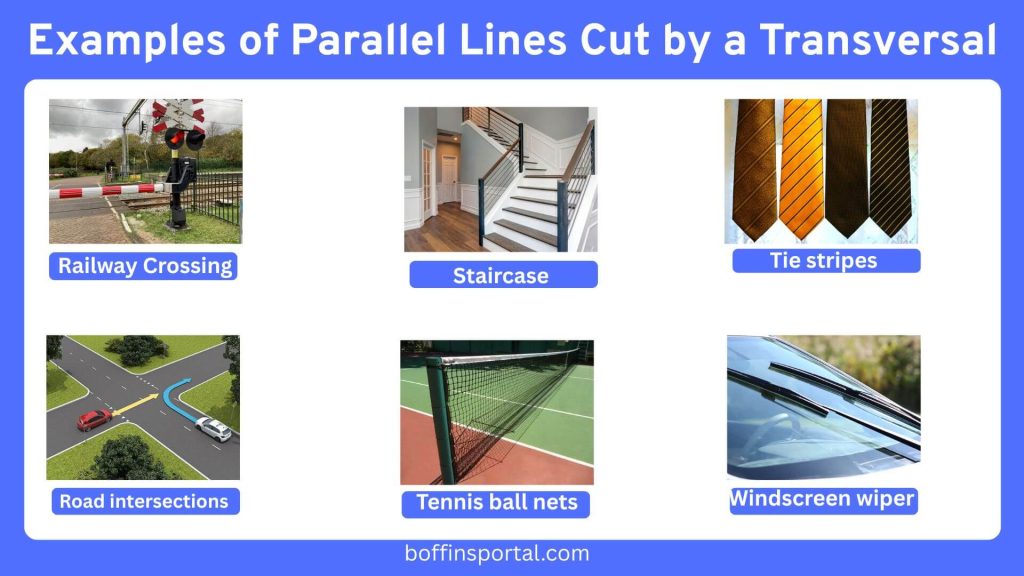Parallel lines in geometry are two or more straight lines in the same plane that never intersect, maintaining a consistent, equidistant relationship throughout their length, denoting no meeting point.
When a line crosses two coplanar lines (lines lying on the same plane), it is called a transversal. A transversal may intersect parallel lines at an angle or at right angles.
Properties of Tansversals
When a transversal is drawn, it creates several important angle relationships, including:
- Corresponding angles which are always congruent. These angles have corresponding locations which make them equal.
- Same side interior angles which are supplementary—add up to 180 degrees. These angles are found inside the lines which share the same side with the transversal.
- Alternate interior angles which are always congruent. These angles are located inside the line but lie opposite sides to the transversal.
- Alternate exterior angles which are always congruent.

Examples of Parallels Lines Cut By Transversals in Everyday Life
1. Railway with sleepers
Railway tracks are usually constructed with horizontal supports underneath the rails called sleepers.
Their function is to secure the rail so that they won’t shift under the heavy force of the moving trains.
They form a transverse alignment with the rail which is essential for offering secure support.
2. Car Windscreen wiper
As the wipers move on the windscreen, they continuously alter their angle to the edges of the windscreen. They form a transversal pattern with any line that crosses the screen.
3. Staircase with railing
Staircases are designed with a rail that you hold to support yourself. The rail is supported by posts and spindles.
If you imagine a line running in across the middle of the spindles and posts, they form transversals
4. Tie stripes patterns
Many ties are patterned with parallel lines that crisscross each other to give a trendy appearance.
Any of these lines would form transversals since they cut other parallel lines
5. Road intersections
In order to allow smooth traffic flow from multiple directions and prevent jams, roads can be made with intersections such as intersecting streets.
This can form transversals when two or more parallel streets are intersected by a third street.
6. Pineapple skin
The patterns of a pineapple surface have lines running across it. Those from transversals as they cut into parallel lines at diagonal angles
7. Tennis ball nets
A rectangular net helps divide the two halves of a tennis court to keep them separate.
Its braided cord material forms a mesh for blocking the ball from passing through it. The mesh has crisscrossing lines that form transversals.
8. Railway crossing
Railways and roads frequently intercross one another. If a road cuts through 2 parallel tracks of a railway, the result is a transversal.
9. Fencing
Many fence materials are made with intersecting wires or wooden structures. This may form transversals when some wires cross two or more parallel wires.
